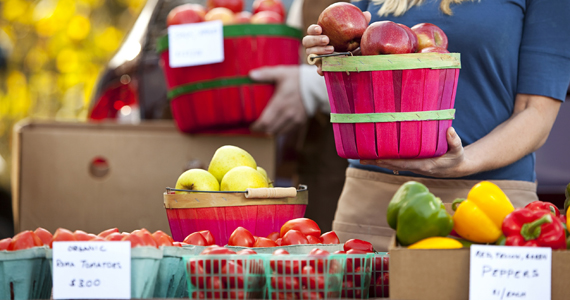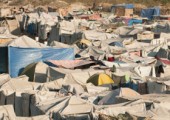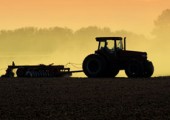
Author | Jonathan Sobels
Paving our market gardens – choosing suburbs over food
In 1947 the Sydney Basin produced “three quarters of the State’s lettuces, half of the spinach, a third of the cabbages and a quarter of the beans; seventy percent of the State’s poultry farms were in the [Basin] and more than eighteen percent of Sydney’s milk came from the [Basin]”.
Sixty years later, the Metropolitan Plan proposes reducing the area of Basin farms to about 600 hectares, through the residential development of 220,000 homes in the north-west and south-west growth areas. The development will pave over 52% or 603 hectares of Sydney’s remaining fresh produce farms. The area devoted to greenhouse vegetables could decline by as much as 60%.
In 2006, of the 90% of the vegetable growers who produced 90% of Sydney’s fresh vegetables, 40% had market gardens located in the designated urban growth areas with no apparent strategies for their relocation¹.
Local farmers have economic and social benefits
Existing agricultural production within the Sydney Basin contributes about $1 billion at the farm gate and $4.5 billion in multiplier effects to the NSW economy². These farmers are producing 12% of the “farm gate value” of NSW primary production using just 1% of the state’s land area.
Of the $1 billion farm gate production value, vegetables accounted for $250 million per annum (pa), poultry $278 million pa (both worth 40% of NSW production), and cut flowers $185 million pa.
Peri-urban gardening is also socially valuable. Market gardens have been vital in establishing the livelihoods of successive waves of immigrants. Each wave began cultivating particular crops of fresh vegetables with which they were familiar (and for which their own communities were a captive market).
They were able to establish a capital base working in factories, restaurants, driving taxis, working on farms and purchasing their own land. They were motivated to be “their own boss”, avoid situations where language was a problem in earning an income, and to avoid being on social security. About 80% of market gardeners are from non-English-speaking backgrounds.
Everything is interdependent
Food security in capital cities relies upon interdependent global systems of financial and food markets, political trade agreements, cheap fuel costs in transportation, and sophisticated logistics. Food security implies a constant availability of food.
Sydney, like most of south-eastern Australia in 2006 – 2009 became vulnerable to drought. Floods and cyclones in Queensland created shortages of some foods, most notably bananas in 2011. NSW already imports 75% of its seafood.
Sydney is vulnerable to international volatility in market prices for a range of commodities. And should the price of oil escalate, it will make transportation of fresh foods over long distances problematic. For these reasons, Sydney needs its own supply of food.
Fresh food means better health
In October 2009, a Victorian Local Government Association report discussed the issue of food insecurity from the perspective of the steady decline of agricultural production close to Melbourne. The study linked the loss of peri-urban agricultural production with food security, land use planning, health and jobs.
When food is 40% to 70% of your weekly budget, any price rise can be life threatening. There were food riots in 28 countries in 2008 when world prices doubled and tripled for dietary staples – wheat, rice and corn/maize. We are fortunate that food only comprises around 15% of the weekly budget in Australia. We are fortunate, too, that we can afford to throw out some 30% of the food we purchase.
What’s more important: development or food?
Other stakeholders – such as land developers – responded positively to NSW’s release of the planned growth regions. Their not-unexpected perspective was captured by the headline: Grow suburbs, not vegies.
These proponents of growth and development look to technology to offer “industrial” food production. They want to use techniques such as capital-intensive computer-controlled glasshouses using hydroponics technology, and large transport hubs to organise food distribution by road to Sydney from production beyond the Sydney Basin.
Real estate developers have a substantial stake in the implementation of the State Metropolitan Plan growth areas. Preserving Sydney’s urban and peri-urban farms will apparently “cripple” the city’s growth, decreasing housing and rental stocks as population growth increases and forcing up prices. Mr Aaron Gadiel, CEO of the Urban Taskforce, asks “ “should we … deprive ourselves of housing and job-creating industries to prop up an industry which is not economically viable?”.
But I wonder: should local, fresh food production be equated with development in terms of priorities?
Jonathan Sobels is a lecturer on Human Geography at Flinders University. This article originally appeared in The Conversation.
References
[1] Parker, F., 2007. Making peri-urban farmers on the fringe matter, State of Australian Cities Conference, Adelaide, November.
[2] Sydney Food Fairness Alliance, 2006. Sydney Basin Agriculture: Local Food, Local Economy. Newsletter # 1, SFFA.





